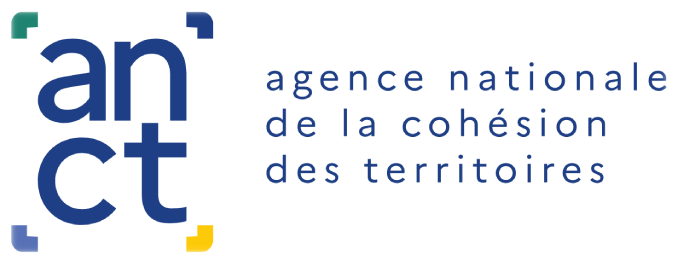Conversational agents have appeared on a large number of sites and since 2016 on instant messengers.
Called "chatbots", these "conversational robots" are capable of simulating a conversation with one or more humans by voice or text exchange, inviting the user to formulate his request in natural language: this request is refined through a form of "conversation". More intuitive than a traditional search engine, these tools can also learn from their mistakes and take into account the context of the discussion.
Originally, chatbots were based on a database of questions and answers that were triggered by certain keywords found in the conversation. Advances in artificial intelligence, and in particular machine learning, now make it possible to design more advanced conversational agents, equipped with a powerful natural language analysis system and capable of improving as they are used.
The customer services of brands, online retailers, banks (but also some public services) deploy chatbots to answer questions (in a well-defined universe), guide users in certain procedures, make personalized recommendations, direct customers to a better rate, or organize the schedule...
Companies expect the implementation of this type of virtual assistant to reduce phone calls, online discussions and email inquiries.
The Gartner Institute predicts for example, that " by 2020, 25% of customer service and technical service operations will use virtual assistants or chatbots across all engagement channels, up from less than 2% in 2017."
Several surveys have been conducted to determine public acceptance of this new mode of interaction.
- According to the survey ConnectedLife 2017 (conducted on a panel of 70,000 people, in 56 countries) by TNS Kantar Institute, the level of acceptance of chatbots would be low overall in Europe (29%, compared to 39% globally). 42% of French people would totally reject the idea of using a company that would only offer online customer service. Only 24% of French people say they are ready to interact with this online chat system.
- In its study on bank-customer relations , Deloitte observes that 54% of French people would not accept this mode of interaction. " There is a schism between generations on this subject, it is mainly young people (between 15 and 34 years old) who are in favor, but only for simple issues.
Smart enough for quick and easy queries
A survey conducted among 3,500 consumers worldwide (on behalf of a software company specializing in consumer engagement) set out to understand the reluctance and expectations of Internet users regarding the development of chatbots.Respondents would, according to the survey, tend to favor chatbots for the simplest and fastest queries. The most popular chatbot use cases are order tracking (60%), finding basic information (53%) and asking basic questions (49%)
- 72% believe that conversational bots "can be fast and convenient in certain situations"
- 58% rate their experience with chatbots as adequate, with "some tasks done well and others done poorly"
- 18% complain that chatbots are inefficient or even boring.
- When well designed, 43% say that interactions with a robot can be almost as good as with a human: 34% think the opposite.
- The main criticisms are "insufficient intelligence to answer questions effectively" (27%) and "lack of context in the conversation" (24%)
- 65% still prefer a human contact at the other end of the channel.
Chatbots in the public sector
The widespread use of chatbots in the private sector raises the question of how these technologies can be used in public services.According to the consulting firm SeeinAccording to the consulting firm, "more digital technology is not inevitably synonymous with a degradation of human relations. If artificial intelligence takes over basic tasks with little added value, agents will be better able to take the time to respond to more specific needs requiring more attention and follow-up. In areas where public services are not widely available, chatbots can help citizens despite the distance from a public institution.
According to MetapolisAccording to Metapolis, " The chatbot can offer an integrated service, where the services offered by the community are often accessible via a multitude of applications (transport, canteen, etc.). (...) It allows local authority agents to have more time to deal with specific cases, requiring a high added value, and therefore to save time on the most recurrent and basic user requests. This means less waiting time for users and an opportunity to communicate on the innovation of the relationship with citizens for the community.
Already, some administrations and local authorities see this as an opportunity to make the relationship between users and administrations more fluid and easier.
- Among the 16 projects selected in the second call for projects for the digital transformation of government services, the "Hipe" project, led by the Ministry of the Interior and the French Office of Immigration and Integration (OFII), aims to simplify the administrative process for foreigners for their applications (asylum, residency, citizenship) through the implementation of a single digital platform.
- The Ministry of the Interior also plans to set up a chatbot (conversational software) for personalized assistance with applications for driver's licenses, passports or identity cards.
- The service-public.fr website launched a call for projects in November 2017 for a chatbot experiment on the official website of the French administration.
- Orleans metropolis has set up a chatbot specialized in human resources for its public agents. The chatbot deals with questions about health insurance, career, retirement and leave. It responds to a real concern for the accessibility of information to agents in their daily lives.
- The Centre Interministériel des Services Informatiques relatifs aux ressources has also developed a chatbot specialized in HR management rules, in order to guarantee and facilitate access.
- In Lille, the municipality has developed a chatbot to inform users about the number of self-service bicycles available in the V'Lille stations.
- Define precise and powerful use cases: a "catch-all" bot would make training and development tedious, and could lead to semantic interpretation errors on the part of the artificial intelligence used.
- Dialogue with audience members to establish realistic and relevant discussion scenarios.
- Work together to give the bot a real identity (name, tone of voice, possible humor...). Not to be neglected, because the bot's personality facilitates acceptance by the users and contributes to the social link.
- Provide for the conversation to be taken over by agents who can take over in case of excessive complexity in the conversation with the user.
Chatbots: humans like any other?
The development of these chatbots will naturally lead to the question of the destination and exploitation of conversations being asked more and more regularly, without the answer being obvious."Are we more comfortable",asks an expert from the CNIL, "to disclose intimate information knowing that it will only be read by a machine? Or, on the contrary, do we trust humans who are more capable of empathy? Depending on the answer, the problem could even be reversed: should we receive specific information when we interact directly (or indirectly) with a human? The line between human intervention and other forms of intelligence is not so clear-cut, and in many cases, our interactions with chatbots end up being supervised by a human... These questions are all the more relevant since one of the basic principles of interactions with conversational bots is communication in natural language, which can lead to transmitting more information about one's emotions than in an environment where queries are more codified (such as on a search engine).A chatbot for Service-public.fr in 2019
The service-public.fr website will soon benefit from a conversational agent. The DILA, Direction de l'information légale et administrative, launched a call for projects in November 2017 for a chatbot experiment on the official website of the French administration.More than 30 responses were received by the close of the call for projects. Among them, the 8 best proposals were presented to a DILA jury. Finally, the company The Chatbot Factory was selected. A French company founded in 2015, it has, despite its young age, shown a solid know-how in the design and implementation of chatbots, with references to back it up.
The project started at the beginning of June with workshops that mobilized DILA's professions and The Chatbot Factory's experts. Objectives: determine the functional, technical and design issues.
The first tests are planned by the first half of 2019.
The DILA will then be able to assess this experiment and make recommendations for industrialization.
Références :
Sources
- 1. Connected Life 2017
- 2. Deloitte: Bank and client relationships
- 3. Consumers: Chatbots still too dumb to get the job done
- 4. Chatbots used by the public sector
- 5. Digital transformation of the public service: video-relays and virtual assistants
- 6. Chatbots - When conversational agents enter the community
- 7. Digital transformation of the public service: what place for chatbots in the citizen relationship?
- 8. A chatbot for Service-public.fr
- 9. InternetActu : From the automation of relationships... to our own automation





